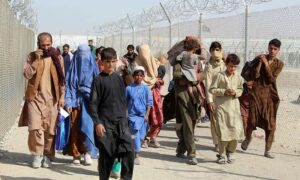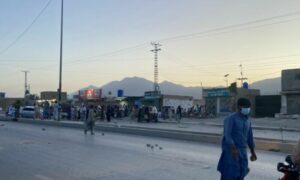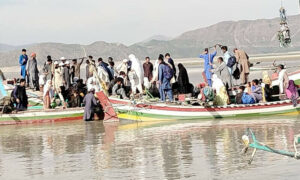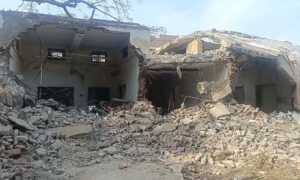Pakistan, situated in a geographically volatile region, has grappled with a series of natural hazards over the last decade that have tested its resilience and disaster preparedness. The earthquake of 2005, which struck the Kashmir region, left a devastating toll of over 75,000 lives lost, standing as a poignant testament to the region’s susceptibility. Subsequent catastrophic events, including the unprecedented floods of 2010, 2013, and 2014, along with a lethal heatwave in 2015, have laid bare Pakistan’s capacity to effectively manage and mitigate calamities. These occurrences offer critical benchmarks to assess Pakistan’s aptitude in dealing with natural disasters and underscore the imperative of cultivating robust strategies for disaster preparedness.
The landscape of Pakistan is a crucible for diverse natural hazards. The topography harbors geological fault lines, notably traversing the northern expanse, rendering it prone to seismic upheavals. The seismic jolt of magnitude 7.6 in 2005 that convulsed the Kashmir region remains a grim reminder of this vulnerability. Balochistan, typified by rugged terrain, experiences seismic tremors that further underscore the geophysical fragility. Conversely, the plains of Punjab and portions of Sindh witness the recurring scourge of floods, exacerbated by the swelling of rivers during the monsoon season. In 2015, Karachi, the bustling coastal metropolis, encountered a deadly heatwave that exacted a toll of over 1,200 lives. The Thar Desert annually bears witness to the toll of blistering temperatures, while droughts ravage regions like Sindh. Collectively, these natural adversities have impacted the lives of over 40 million individuals since 2005, precipitating an economic setback exceeding USD 20 billion.
In the realm of disaster preparedness, Pakistan has embarked on a trajectory of remarkable progress, albeit with nuances that warrant consideration. The establishment of the National Disaster Management Authority (NDMA) has effectively consolidated the reins of disaster-related undertakings at the federal echelon. This transition away from the antiquated National Calamities (Prevention and Relief) Act of 1958 underscores the commitment to bolstered preparedness. The provinces, consequent to the 18th Amendment to the Constitution in 2010, have assumed an empowered role in disaster management, with district governments entrusted with devolved responsibilities. The NDMA emerges as a lynchpin in orchestrating disaster response endeavors, marshaling various stakeholders that span government departments, armed forces, NGOs, and INGOs.
Yet, amidst these advancements, a constellation of challenges remains embedded within Pakistan’s disaster management framework. The conundrum of coordination persists, fueled by the entanglement of roles and responsibilities across policy-making entities, engendering inefficiencies. The undue dependence on the military for disaster management raises concerns about the government’s resolve to nurture civilian institutions and formulate policies. While the establishment of the Ministry of Climate Change is a pivotal step, the interplay between climate change and disaster management mandates clear demarcation to circumvent encumbrances. This calls for a meticulous delineation of roles and communication mechanisms.
Education and the imbuing of resilience in societal consciousness are pivotal anchors in the endeavor of disaster preparedness. While the government harnesses mainstream media for awareness campaigns, their reactivity often trumps proactivity. NGOs, both autonomously and government-affiliated, contribute to localized awareness initiatives, yet their efforts lack congruence and consistency. The harnessing of civil society’s potential to propagate comprehensive disaster preparedness education is an ongoing challenge, particularly in smaller locales and vulnerable geographies.
Concurrently, Pakistan’s trajectory has elicited a spectrum of policy recommendations, calibrated to the nation’s experiential tapestry. The imperative to revisit disaster management constructs is foregrounded, inciting a rigorous assessment of efficacy and alignment with intended objectives. A potent emphasis on local capacity-building emerges, galvanizing swift responses and empowering communities. An imperative pivot beckons, broadening the spectrum of focus to encompass less perceived risks, encompassing seismic events and heatwaves. This mandate resonates in the domain of enforcement of building codes and fortification of infrastructure against impending adversities.
Partnership crystallizes as a linchpin in surmounting fiscal constraints, ushering in innovative collaboration with the private sector and external stakeholders. Initiatives such as risk insurance funds, underpinned by symbiotic partnerships, emerge as potent tools to mitigate financial impediments. Outsourcing logistical management to the private domain, underpinned by outcomes-driven contracts overseen by external actors, navigates fiscal challenges. Private entities could spearhead early warning systems, marshaling data from public sector technical agencies and public data streams, disseminating alerts via mobile technology to affected regions.
At its core, Pakistan’s trajectory mandates a nuanced recalibration, with the spotlight on disaster preparedness, eclipsing disaster management alone. A redrafted mission for the NDMA, spotlighting risk reduction, prescribes an imperative. The electoral recognition of progressive policy champions is pivotal, sustaining incentives for a shift toward proactive preparedness initiatives. The media assumes a pivotal role in steering this transition and extolling pioneering pathfinders.
In culmination, Pakistan’s journey through natural hazards underscores the imperativeness of fortifying disaster preparedness capabilities. As the nation navigates seismic shocks to scorching heatwaves, the mantle of disaster risk reduction is not merely a contingency but an inherent responsibility. Pakistan’s paradigm shift, from disaster management to disaster preparedness, hinges on an assemblage of strategies. These encompass local capacity building, fortification against latent risks, symbiotic alliances with the private domain, and an intensified emphasis on preparedness. This orchestrated cadence resonates with the aspirations of a more resilient Pakistan, poised to weather nature’s most tumultuous outbursts.











